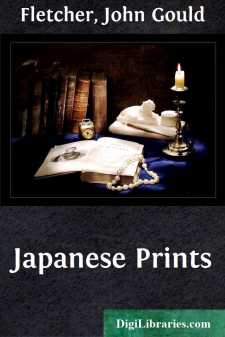Categories
- Antiques & Collectibles 13
- Architecture 36
- Art 48
- Bibles 22
- Biography & Autobiography 813
- Body, Mind & Spirit 142
- Business & Economics 28
- Children's Books 15
- Children's Fiction 12
- Computers 4
- Cooking 94
- Crafts & Hobbies 4
- Drama 346
- Education 46
- Family & Relationships 57
- Fiction 11828
- Games 19
- Gardening 17
- Health & Fitness 34
- History 1377
- House & Home 1
- Humor 147
- Juvenile Fiction 1873
- Juvenile Nonfiction 202
- Language Arts & Disciplines 88
- Law 16
- Literary Collections 686
- Literary Criticism 179
- Mathematics 13
- Medical 41
- Music 40
- Nature 179
- Non-Classifiable 1768
- Performing Arts 7
- Periodicals 1453
- Philosophy 64
- Photography 2
- Poetry 896
- Political Science 203
- Psychology 42
- Reference 154
- Religion 513
- Science 126
- Self-Help 84
- Social Science 81
- Sports & Recreation 34
- Study Aids 3
- Technology & Engineering 59
- Transportation 23
- Travel 463
- True Crime 29
Japanese Prints
Description:
Excerpt
Preface
At the earliest period concerning which we have any accurate information, about the sixth century A. D., Japanese poetry already contained the germ of its later development. The poems of this early date were composed of a first line of five syllables, followed by a second of seven, followed by a third of five, and so on, always ending with a line of seven syllables followed by another of equal number. Thus the whole poem, of whatever length (a poem of as many as forty-nine lines was scarce, even at that day) always was composed of an odd number of lines, alternating in length of syllables from five to seven, until the close, which was an extra seven syllable line. Other rules there were none. Rhyme, quantity, accent, stress were disregarded. Two vowels together must never be sounded as a diphthong, and a long vowel counts for two syllables, likewise a final "n", and the consonant "m" in some cases.
This method of writing poetry may seem to the reader to suffer from serious disadvantages. In reality this was not the case. Contrast it for a moment with the undignified welter of undigested and ex parte theories which academic prosodists have tried for three hundred years to foist upon English verse, and it will be seen that the simple Japanese rule has the merit of dignity. The only part of it that we Occidentals could not accept perhaps, with advantage to ourselves, is the peculiarly Oriental insistence on an odd number of syllables for every line and an odd number of lines to every poem. To the Western mind, odd numbers sound incomplete. But to the Chinese (and Japanese art is mainly a highly-specialized expression of Chinese thought), the odd numbers are masculine and hence heavenly; the even numbers feminine and hence earthy. This idea in itself, the antiquity of which no man can tell, deserves no less than a treatise be written on it. But the place for that treatise is not here.
To return to our earliest Japanese form. Sooner or later this crystallized into what is called a tanka or short ode. This was always five lines in length, constructed syllabically 5, 7, 5, 7, 7, or thirty-one syllables in all. Innumerable numbers of these tanka were written. Gradually, during the feudal period, improvising verses became a pastime in court circles. Some one would utter the first three lines of a tanka and some one else would cap the composition by adding the last two. This division persisted. The first hemistich which was composed of 17 syllables grew to be called the hokku, the second or finishing hemistich of 14 syllables was called ageku. Thus was born the form which is more peculiarly Japanese than any other, and which only they have been able to carry to perfection.
Composing hokku might, however, have remained a mere game of elaborate literary conceits and double meanings, but for the genius of one man. This was the great Bashà  (1644-1694) who may be called certainly the greatest epigrammatist of any time. During a life of extreme and voluntary self-denial and wandering, Bashà  contrived to obtain over a thousand disciples, and to found a school of hokku writing which has persisted down to the present day....


